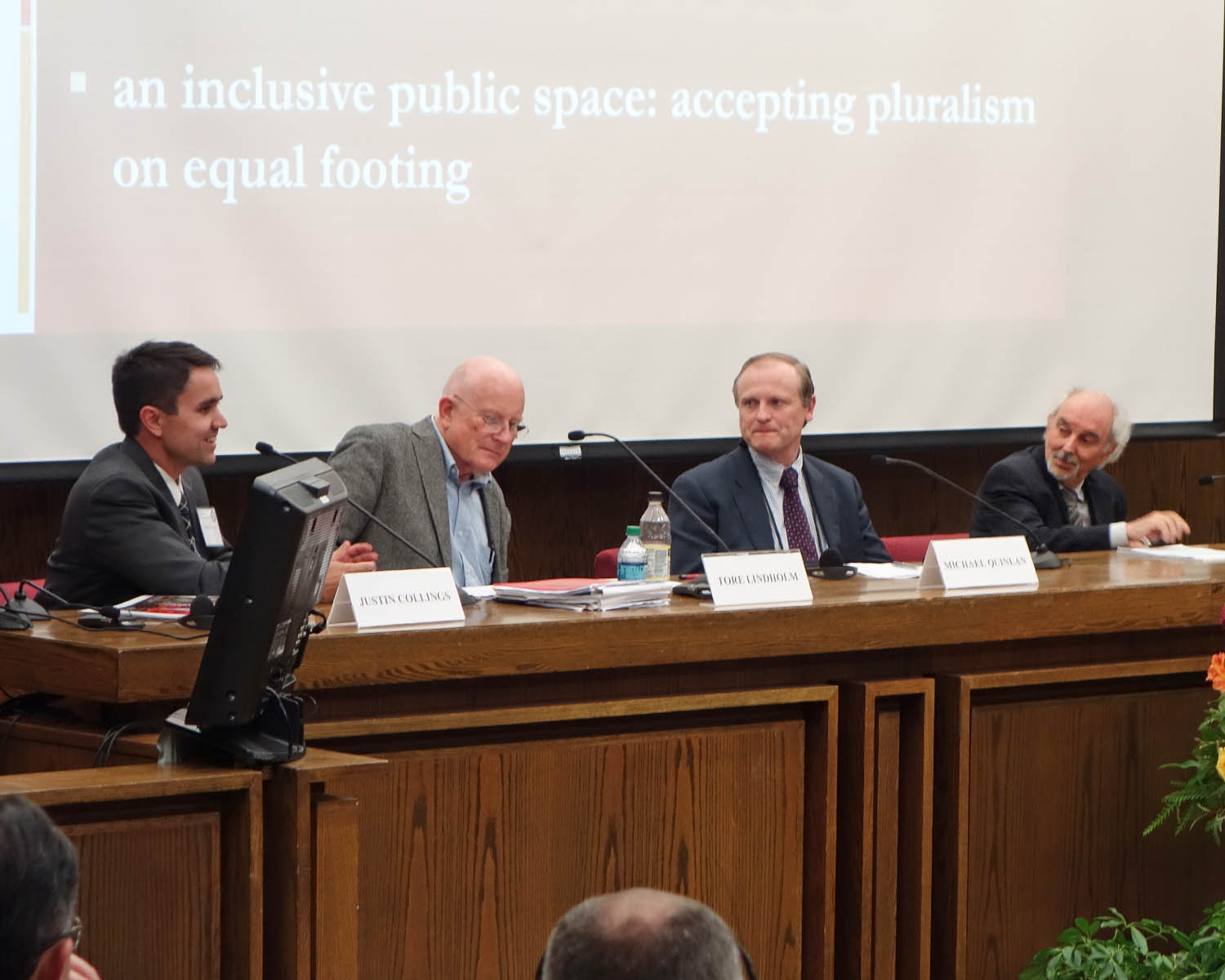Symposium 2015: Religion and Social Stability

Reported by Jarvis Yau
This session was moderated by Professor Justin Collings of BYU Law School. The presenters include Tore Lindholm, Professor Emeritus, Norwegian Center for Human Rights, Faculty of Law, University of Oslo, Norway; Michael Quinlan, the Dean, School of Law Sydney, University of Notre Dame Australia; and Silvio Ferrari, Professor of Canon Law, University of Milan, Italy.
Professor Lindholm was the first to speak. He took the opportunity to introduce part of his paper regarding social stability and equal protection of conscience. He argued that there are special rules made for and applied to religious people, which cast doubts as to whether equal protection rules do treat every individual equally, or whether religious people get special treatment He expressed that if religious people are treated differently then equal protection might not be promoting true equality. He further discussed how each person’s conscience and freedom should be protected regardless of their belief, or if they have a belief at all. Professor Lindholm used Utah as a model of a place where mutual respect can be found.
Dean Quinlan was the next to present. He is an active practicing Catholic and explained the results of his research and analysis from the Catholic perspective. He reviewed the history of Catholic and other religious groups and attempted to link their current practices to their past in order to explain why these religious people do what they do. Dean Quinlan then explained how the activities of the religious groups help to promote stability in modern day society as people are more unified and are taught moral principles.
Professor Ferrari was the last to speak in this session. He gave his presentation based on the assumption of religion as an element of conflict and discussed what people can do about it. He deconstructed the notion of “public” through three methods: secularization of the public sphere, laicization of the public institutions, and pluralization of the public sphere. In his attempt to illustrate his methods, he mentioned that freedom of religion could be granted through the separation of Church and the liberal secular State. He also explained that migration, globalization, and individualization were the reasons of coexistence of different religious and non-religious beliefs and practices. There were thus also tensions arising from issues like places of worship, religious symbols, ritual slaughtering, etc. He concluded his presentation by suggesting people work together toward an open public sphere that is beyond the horizon of secularism and an inclusive public sphere where people accept pluralism on equal footing.